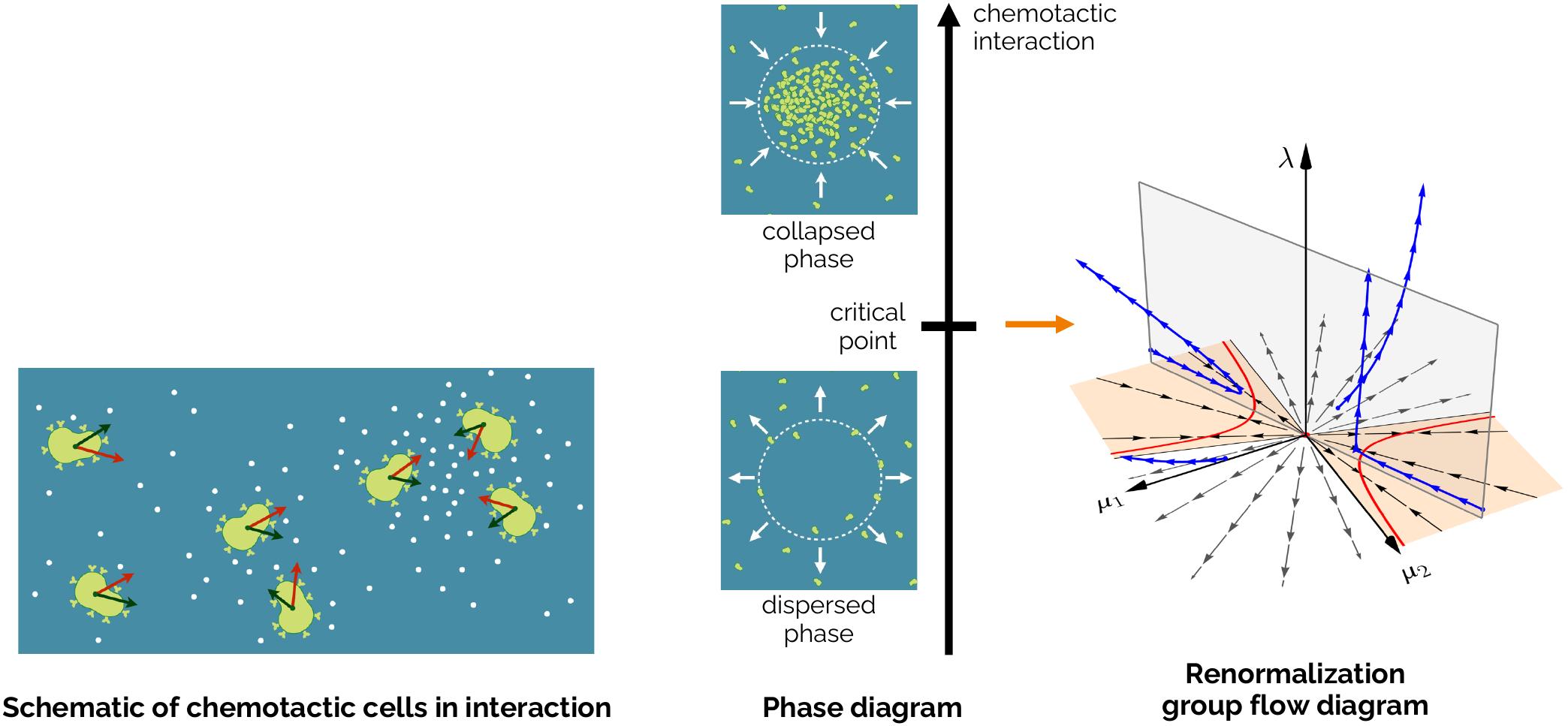Nonequilibrium statistical physics
Interplay between motility and proliferation
Propagation of a pattern-forming front.
Simulation showing the expansion of a proliferating colony. In the colony bulk, the cell density is sufficiently large to induce a local slowing down of the cells. Slow cells accumulate and form denser regions, separated by low density regions where cells move faster. The expanding front thus triggers a motility-induced pattern formation.
Simulation showing the expansion of a proliferating colony. In the colony bulk, the cell density is sufficiently large to induce a local slowing down of the cells. Slow cells accumulate and form denser regions, separated by low density regions where cells move faster. The expanding front thus triggers a motility-induced pattern formation.
Chemotaxis and proliferation

Understanding the self-organization of living systems is one of the biggest conceptual challenges of the present century. A generic mechanism that drives such organization is interaction among the individual elements — which may represent cells, bacteria, or even enzymes — via chemical signals. The ability of an individual cell to follow a gradient of chemicals is called chemotaxis.
The interplay between cellular growth and cell-cell signaling is essential for the aggregation and proliferation of bacterial colonies, as well as for the self-organization of cell tissues.
